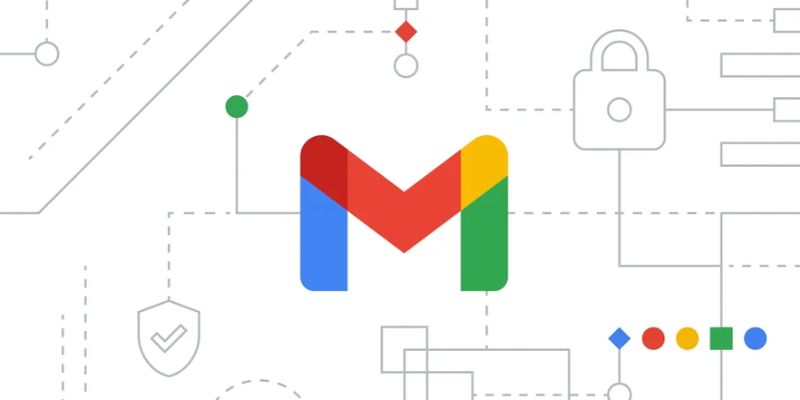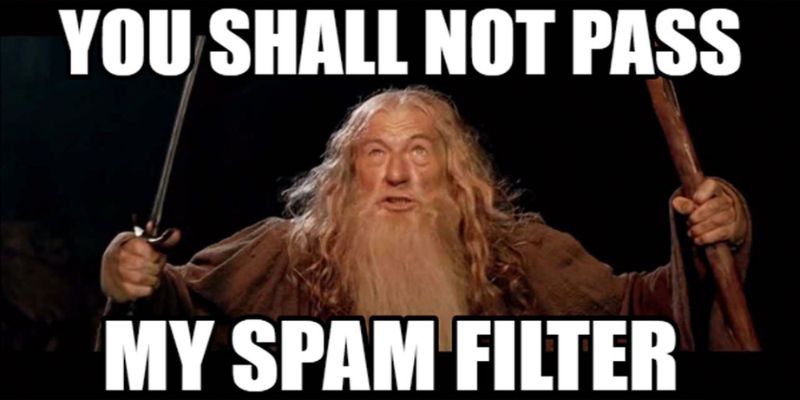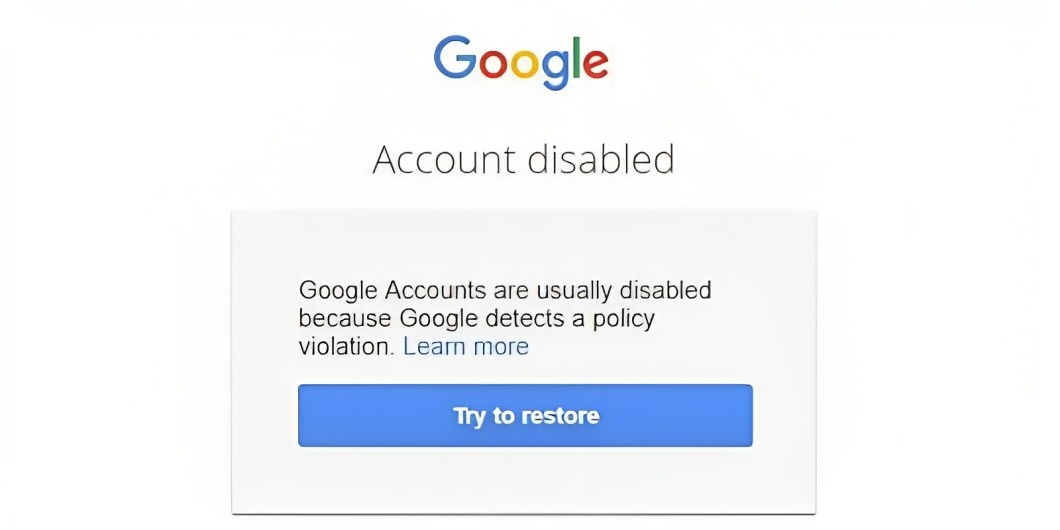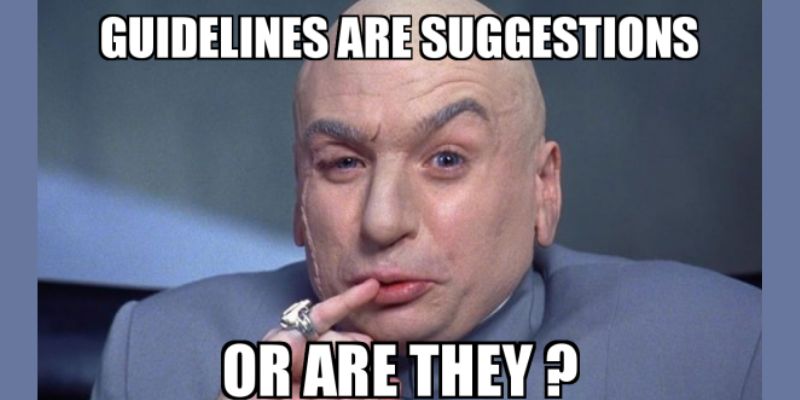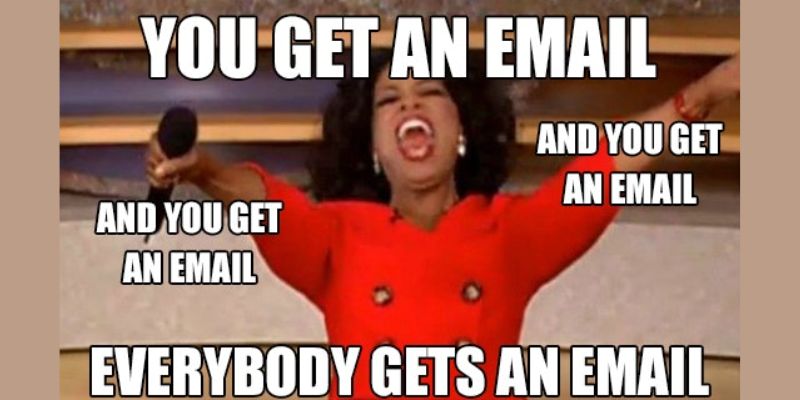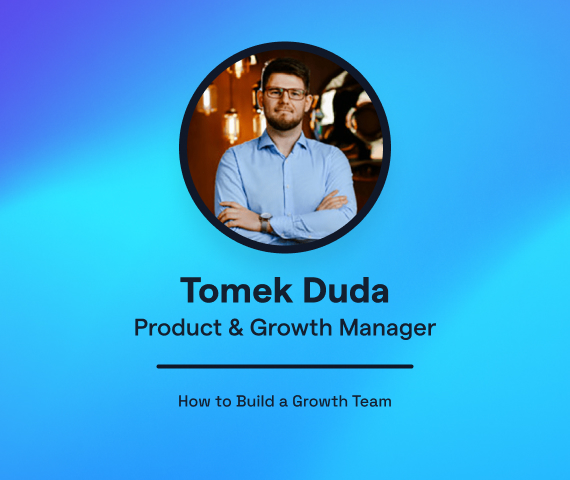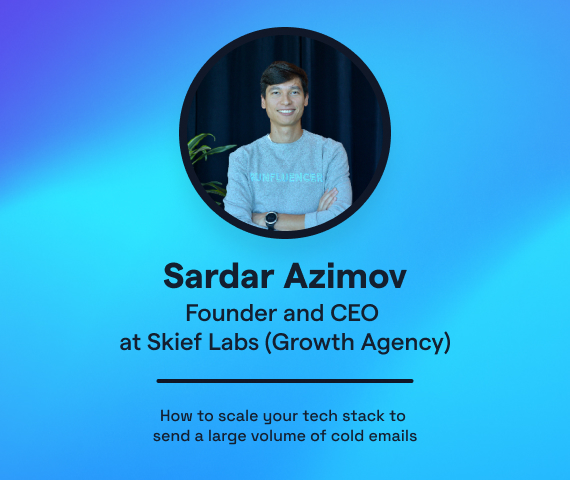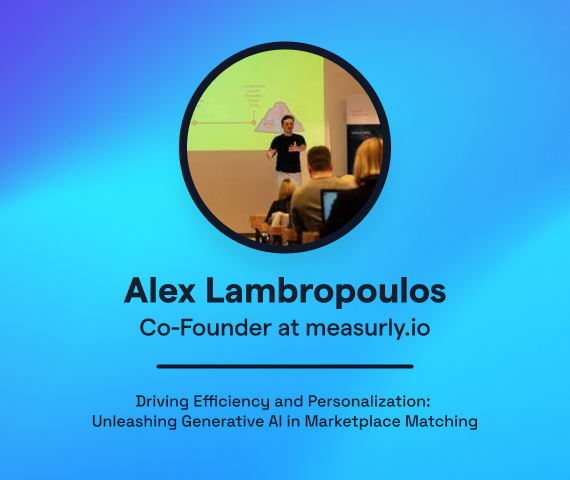Google & Yahoo’s New Anti-spam Rules: What Does it Mean for Cold Emails?
In October 2023, two giants in email service providers announced a set of new policies to offer a safer and less spammy inbox to their users starting in 2024. Shortly after, sales automation software vendors, like Outreach, sent out a notification to their users regarding the upcoming regulations, creating a tsunami of reactions on LinkedIn and quite a lot of mixed messages and recommendations regarding cold emailing.
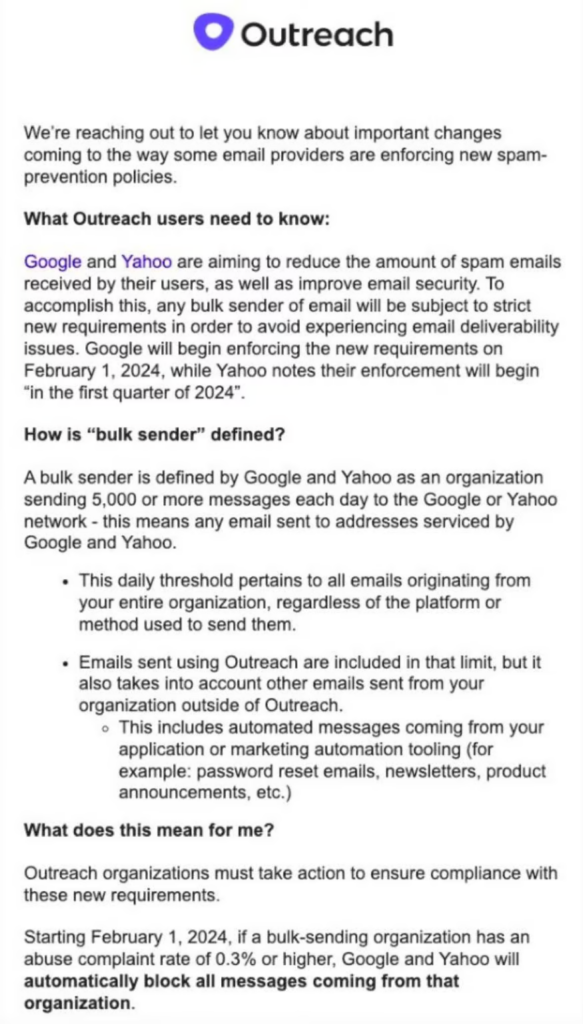
Knowing that nearly 50% of all business mailboxes are managed by Google (almost 60% in the US), one can easily understand the panic generated among all sales and lead generation professionals.
In this article, Sardar shares his vision of how these changes might impact email communication, especially for businesses and marketers. Based on his outbound marketing experience with Skief Labs, he provides insights into the specific requirements, their implementation timeline, and the broader implications for email senders and recipients alike.
Overview of new policies
Beginning in 2024, Gmail and Yahoo are implementing new requirements for bulk email senders. These requirements focus on three main aspects: authenticating emails to confirm sender identity, enabling easy unsubscription for recipients, and maintaining a low spam rate. This move aims to enhance email security and reduce spam, making inboxes safer and less cluttered. These changes underscore the evolving landscape of digital communication and the need for senders to adapt their practices for better email deliverability and security.
As of December 2023, the key points of these policies are summarized in the table below. Given the market share of Gmail accounts, we focused our attention on their policies.
| Requirement | All Senders | Bulk Senders (5,000+ Messages/Day) |
| Email Authentication | Set up SPF or DKIM | Set up both SPF and DKIM |
| DNS Records | Valid forward and reverse DNS (PTR) records | Same as all senders |
| TLS Connection | Required | Required |
| Spam Rates | Keep below 0.10%; avoid reaching 0.30% or higher | Keep below 0.10%; avoid reaching 0.30% or higher |
| Message Formatting | According to Internet Message Format (RFC 5322) | Same as all senders |
| Impersonation of Gmail Headers | Not allowed | Not allowed |
| ARC Headers for Forwarded Email | Required for regular forwarders | Required for regular forwarders |
| DMARC Email Authentication | Not specified | Required (can be set to ‘none’) |
| DMARC Alignment for Direct Mail | Not specified | Required |
| One-Click Unsubscribe for Marketing Messages | Not specified | Required |
Please refer to Google’s “Email sender guidelines” for more details. It’s well structured, and you can follow all the requirements step by step.
Who is concerned
To have a clear understanding of who is concerned, we grouped the overview into two different categories, one by sending volume and another by recipient mailbox.
Who are the bulk senders?
Definition: Bulk senders are email senders that send close to 5,000 or more messages (with the same domain in the From: header) within a 24-hour period. Senders who have sent close to 5000 messages in a 24-period one or more times are considered bulk senders.
Important precision: bulk senders are those who send 5,000 or more messages a day to Gmail accounts. If you send over 5,000 emails daily but effectively send less than 5,000 emails to Gmail accounts, you are not considered a bulk sender.
Which recipient mailboxes are concerned?
The following services are concerned with this new regulation.
- Mailboxes hosted by Gmail: A personal Gmail account is an account that ends in @gmail.com or @googlemail.com.
- Mailboxes hosted by Yahoo and AOL: Yahoo accounts ending with “@yahoo.com” or “@myyahoo.com”, or different local domains, such as “@yahoo.co.uk” or “@yahoo.fr”. AOL emails usually end with “aol.com”.
- Mailboxes hosted by Google Workspace: two important concepts are to be distinguished here: when sending to or from Google Workspace accounts.
- The Email sender guidelines don’t apply to messages sent to Google Workspace accounts. Sender requirements and Google enforcement only apply when sending emails to personal Gmail accounts. This is a critical nuance that was not clarified before, as it impacts all outbound email marketers, with Google Workspace being one of the favorite business email providers in the world.
- Google Workspace users must meet the Email sender guidelines requirements when sending messages to personal Gmail accounts. The requirements don’t apply to Google Workspace inbound and intra-domain messages.
Special considerations for B2C and B2B
- B2C Companies: These businesses often reach customers through personal email addresses, many of which are hosted by providers like Gmail and Yahoo (according to Litmus, at least 34% of cumulated email client market share). The new guidelines necessitate a more rigorous email authentication and spam rate control approach. B2C communications must be carefully managed to maintain customer trust and avoid spam filters.
- B2B Businesses: B2B communications often occur between business domains, but interactions with personal email addresses are not uncommon, especially in smaller businesses or start-ups. B2B senders must be mindful of these new rules when communicating with contacts using free email providers, ensuring compliance to avoid deliverability issues.
Whether B2C or B2B, businesses need to adapt to the varying requirements of different mailbox providers to maintain effective email communication strategies.
What are the consequences of non-compliance?
Email deliverability
Failing to comply with the email sender guidelines can have significant repercussions. The most immediate impact is on email deliverability: non-compliant emails might be rejected outright or funneled into recipients’ spam folders, drastically reducing their effectiveness and reach.
Account or organization suspension
For businesses using Google Workspace infrastructure, the consequences are even more severe. Non-compliance could lead to suspending individual accounts or, in more extreme cases, the entire organization.
Additionally, starting in February 2024, senders with a user-reported spam rate greater than 0.3% will no longer be eligible for mitigations. This stipulation highlights the importance of maintaining low spam rates to ensure ongoing support and effective email delivery.
Recommendations and strategies
- Segmentation by Email Provider: Segment your contacts into different pools by email service provider (Yahoo, Gmail, Microsoft, Google Workspace) for each contact.
- Data cleansing: Remove all hard bounces to ensure list accuracy and compliance. Automatically unsubscribe recipients who have multiple bounced messages.
- Analyze Sending Volume:
- Historical Analysis: Review historical data to understand daily sending volumes and their distribution across different recipient domains.
- Marketing emails (newsletters, welcome emails, etc.)
- Automated notifications (confirmations, etc.)
- Sales emails (including cold emails)
- Volume by email provider: Analyze the maximum daily volume across different communications types (marketing, sales, automated notifications) per service provider (Yahoo/AOL, Gmail, Google Workspace, Microsoft, and others). Validate if the daily maximum volume of personal emails is over 5,000 contacts and follow the sender guidelines.
- Historical Analysis: Review historical data to understand daily sending volumes and their distribution across different recipient domains.
- Domain-Specific Strategy: Develop strategies tailored to the volume of emails sent to each domain type.
- Marketing Emails to Gmail/Yahoo: Double Opt-In Verification: Check for double opt-in confirmation for recipients using Gmail, Yahoo, or AOL. Ensure your internal tools can track opt-in compliance effectively.
- Automated Notifications: Differentiation of ‘From’ Category. Follow Google’s recommendation to use consistent ‘From’ addresses for messages in the same category (e.g., sales@, deals@, alert@ for different message types from solarmora.com).
- Cold Emails: the following recommendations could be observed based on the type of audience.
- B2C to Gmail/Yahoo/AOL: Avoid in the EU due to data privacy regulations.
- B2B Using Free Email Providers: Use Microsoft to prevent Google Workspace blockage; emails might not be delivered in the worst-case scenario, but you can keep your tech infrastructure.
- B2B Google Workspace Users: Have a healthy mix of Microsoft and Google Workspace accounts based on exposure and sending volumes. Avoid using only Google Workspace to prevent organizational suspension or create separate orgs per domain to avoid a domino effect.
- B2B Microsoft Users: Prefer Microsoft sender mailboxes for higher deliverability.
What does it mean for cold emailers?
While the new email guidelines have a significant impact on marketing communications, their technical impact on most B2B cold emails is relatively modest. SPF and DKIM are already standard practices. However, the incorporation of an unsubscribe link remains uncertain, with its format yet to be clarified. For Google Workspace users as recipients, the policy’s direct implications are limited (for now at least).
However, to mitigate potential issues, it’s advisable to limit sending over 5,000 emails daily from the same domain to Google accounts and to employ a mix of email providers. Embracing a more strategic and quality-focused approach in email communications is becoming increasingly essential. A thorough analysis of your customer and prospect database is recommended to gauge the policy’s impact on your communications. For a deeper dive into setting up a scalable cold email infrastructure, refer to our technical guide on GrowthMentor.
If you have any questions, please feel free to book a session with Sardar or ask him for a free session on GrowthMentor.


Growing my own business 🌱 Paid Social & Google Ads | SaaS & E-Commerce | Fashion & Education Industries | Mobile Apps
“What I wanted help with was an audit of a landing page template that I planned on using for a large-scale PPC campaign. We did a screenshare and I showed her my landing page and walked her through my thought process. We had a great discussion about the pros and cons of the page and by end I had a huge list of easy things I could do to improve the conversion potential of the template.”

I enjoyed the session and found it very valuable. Pedro listened but also had specific questions he wanted answered. He offered concrete suggestions on things I was asking about.

